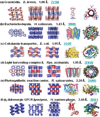Crystallizing membrane proteins for structure-function studies using lipidic mesophases
- PMID: 21599641
- PMCID: PMC3739445
- DOI: 10.1042/BST0390725
Crystallizing membrane proteins for structure-function studies using lipidic mesophases
Abstract
The lipidic cubic phase method for crystallizing membrane proteins has posted some high-profile successes recently. This is especially true in the area of G-protein-coupled receptors, with six new crystallographic structures emerging in the last 3½ years. Slowly, it is becoming an accepted method with a proven record and convincing generality. However, it is not a method that is used in every membrane structural biology laboratory and that is unfortunate. The reluctance in adopting it is attributable, in part, to the anticipated difficulties associated with handling the sticky viscous cubic mesophase in which crystals grow. Harvesting and collecting diffraction data with the mesophase-grown crystals is also viewed with some trepidation. It is acknowledged that there are challenges associated with the method. However, over the years, we have worked to make the method user-friendly. To this end, tools for handling the mesophase in the pico- to nano-litre volume range have been developed for efficient crystallization screening in manual and robotic modes. Glass crystallization plates have been built that provide unparalleled optical quality and sensitivity to nascent crystals. Lipid and precipitant screens have been implemented for a more rational approach to crystallogenesis, such that the method can now be applied to a wide variety of membrane protein types and sizes. In the present article, these assorted advances are outlined, along with a summary of the membrane proteins that have yielded to the method. The challenges that must be overcome to develop the method further are described.
Figures



References
-
- Caffrey M. J.D. Bernal and the genesis of structural biology. J. Physics Conf. Ser. 2007;57:17–28.
-
- Caffrey M, Kinsella JE. Growth and acyltransferase activity of rabbit mammary gland during pregnancy and lactation. J. Lipid Res. 1977;18:44–52. - PubMed
Publication types
MeSH terms
Substances
Grants and funding
LinkOut - more resources
Full Text Sources

